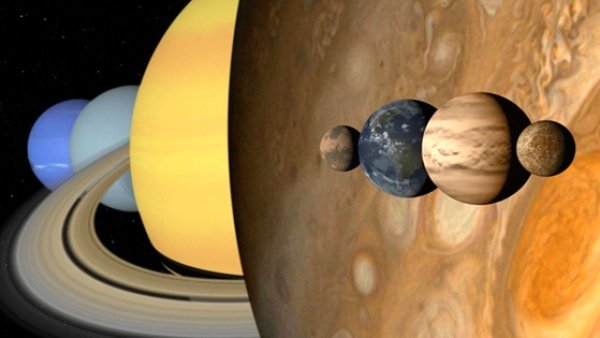Is Our Solar System Common?
Copernicus showed that Earth is not at the center of the solar system. Further studies show that the Sun resides in a rather remote part of the galaxy and that numerous stars host planets. According to popular opinion, these and many other discoveries demonstrate how science has stripped humanity of any real importance. In other words, scientific progress inevitably leads to the conclusion that Earth and humanity are mediocre in every way. Aside from the historical inaccuracy of this narrative, studies of planets outside our solar system show that Earth might actually be special.
In 1992, astronomers discovered the first confirmed planets outside the solar system, and named them PSR 1257+12 b and PSR 1257+12 c. The “PSR” in the name stands for “pulsar” because the planets orbit a pulsar (a type of star). Pulsars result from stars massive enough to undergo a supernova explosion at the end of their life. The supernova compresses the material at the center of the star to enormous densities, leaving either a black hole or a neutron star. A neutron star generally has a mass similar to the Sun, with that mass squeezed into a radius of less than ten miles. Usually, the neutron star also spins rapidly (as fast as hundreds of rotations a second) and gives off beams of light that astronomers can detect. Astronomers used the precise timing exhibited by pulsars to find the two planets in this case. Finding planets around such a bizarre star was the first of many unexpected discoveries.
The String of Unexpected Discoveries
First planet orbiting a sun-like star. While astronomers always thought planets outside the solar system existed, the first discovery of a planet orbiting a sun-like star occurred in 1995. In April 1994 two astronomers at the Geneva Observatory began monitoring a star called 51 Pegasi. By late 1995, their data clearly showed the presence of a planet, named 51 Pegasi b, with about half the mass of Jupiter and orbiting the star in a nearly circular path. In our solar system, Jupiter orbits the Sun at a distance of just over 5 astronomical units (AU) and takes nearly 12 years to complete an orbit. In contrast, 51 Pegasi b orbits its host star at a distance 100 times closer than Jupiter’s orbit around the sun and takes just over 4 days to complete an orbit. The proximity to its host star results in a surface temperature of 1900oF for 51 Pegasi b! Astronomers have since discovered many of these “hot Jupiters.”
Second planet orbiting a sun-like star. Just over a year past the discovery of 51 Pegasi b, astronomers found a second planet in a surprising configuration. Two teams operating at the MacDonald and Lick observatories monitored the star 16 Cygni B for signatures of a planetary companion. Their searches found a planet with a mass 50 percent larger than Jupiter’s with an 800-day orbital period. While this planet appears more similar to Jupiter than 51 Pegasi b, the shape of its orbit is far from circular. Measurements give an eccentricity for 16 Cygni B of 0.69, meaning that its orbit brings the planet as close as 0.5AU from its host and takes it as far as 2.8AU. Such a large variability in its distance from the star will cause enormous temperature changes. Adding to the oddity of this planet, the host star actually resides in a triple star system. Two of the stars, 16 Cygni A and C, orbit each other at a distance of 73AU, and 16 Cygni B orbits this pair at a distance of 860AU.
Planets orbiting multiple stars. In 2011, a team of scientists announced the discovery of Kepler-16b. Studies of this exoplanet revealed that it orbited around two stars, one with a mass two-thirds that of the Sun, and the other with one-fifth the mass. Kepler-16b takes around 225 days to orbit the binary system but has a mass similar to Saturn. This was not the first planet to orbit a binary system, but the first has a much less memorable name (PSR B1620-26 b) and contains a white dwarf and a neutron star. The stars orbited by Kepler-16b would look much more similar to the iconic scene from Star Wars where Luke watches the sunset of an orange and red star. The total radiation Kepler-16b receives from the stars dips by almost 15 percent every 41 days as the smaller star partially eclipses the larger star. The dip in radiation lasts for a couple of hours and likely causes variations in the planet’s temperature and atmospheric structure.
Planets not orbiting any star. After two decades of planet hunting (and finding), the number of planets outside the solar system numbered in the few hundreds. Many of the techniques used to find planets look for the effects of the planet on the host star. However, the gravitational lensing method only requires that an object (like a planet or star) cross the path between the observatory and a more distant star. Such an arrangement will cause a magnification of the distant star’s light. The amount of magnification and how long it lasts enables a determination of the intermediate object’s mass. As astronomers scanned the heavens using this technique they made the surprising discovery that many rogue planets wander about the Milky Way Galaxy without orbiting around any host star. The data indicates that the rogue planets similar in mass to Jupiter outnumber stars in the Milky Way Galaxy by a factor of 2 to 11, (although it may be much larger2).
Planets orbiting in the wrong plane and the wrong direction. Astronomers routinely measure the rotation axes of distant stars. As planet-hunting technology matured, astronomers could extract more information about exoplanets such as orbital plane and orbital direction. Starting in 2009, exoplanet searches began finding planets with highly inclined orbits. They even found planets with retrograde orbits where the planet revolves in the opposite direction of the host star’s rotation.
A whole different kind of planet. Perhaps the most surprising find was related to a type of planet not present in the solar system. We have rocky planets that are equivalent to the size of Earth, and we have gas giants as small as Uranus (about 15 times the mass of Earth), but nothing in between. One of the first exoplanets discovered orbits the pulsar PSR 1257 +12. Astronomers now know that the system contains three planets (designated with b, c and d after the pulsar name) and that two of these (c and d) have masses only four times that of Earth. This small mass means that they aren’t gas giants. Instead, they likely have rocky surfaces like Earth, but significantly larger sizes. Observations continue to show that these super-Earths occur in a high fraction of exoplanet systems, which raises the question of why our solar system doesn’t have one.
These unexpected discoveries accomplished more than simply revealing the many different ways that a planetary system might look. They gave scientists important input into planet formation models that help us understand what type of history a habitable planet requires. And, they demonstrate that our own solar system looks rather unusual, at least so far.
Endnotes
- T. Sumi et al., “Unbound or Distant Planetary Mass Population Detected by Gravitational Microlensing,” Nature 473 (May 18, 2011): 349–52, doi:10.1038/nature10092.
- Louis E. Strigari et al., “Nomads of the Galaxy,” Monthly Notices of the Royal Astronomical Society 423 (March 26, 2012): 1856–65, doi:10.1111/j.1365-2966.2012.21009.x.
Subjects: Exoplanets, Extrasolar Planets
Check out more from Reasons to Believe @Reasons.org





